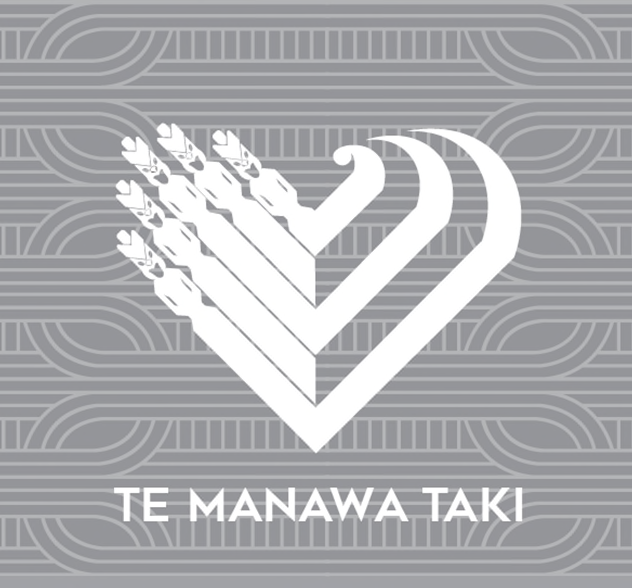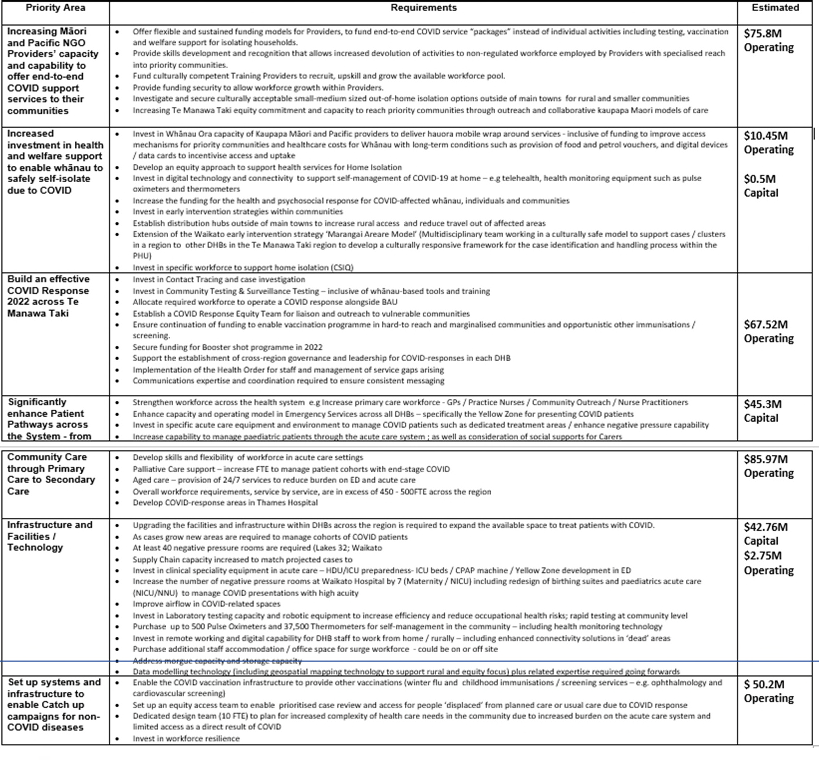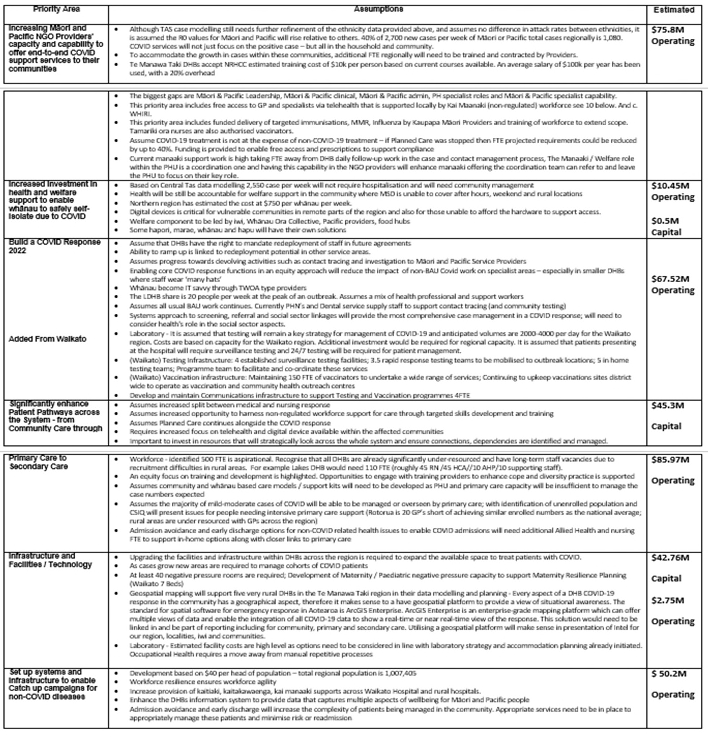
 Te Manawa Taki Resilience Plan
Te Manawa Taki Resilience Plan
9 November 2021
Te Manawa Taki DHB Resilience Plan - Overview
The purpose of this plan is to provide advice to DHBs, Ministry of Health and Minister of Health and Associates on what wil
be required to build the resilience of the DHB healthcare system in anticipation of changes in pandemic management
strategy and Government policy settings.
A function is considered resilient if it has the capacity and capability to support sustainable responses to recurring
community resurgences of COVID-19, without limiting the ability to provide effective non-COVID related health care
services.
Key assumptions
Predicted regional numbers per week (in 2022)
(from model ing by TAS)
The “worst case scenario” model ing has been used to inform
2,700
resilience planning.
New cases
•
90% adult (16+) vaccination rate.
•
No vaccination of <12 year olds.
150
2,550
•
Loose public health controls.
Hospital admissions
In community
•
Loose border restrictions.
14
Midland DHBs have requested further model ing against
Deaths
Regional Resilience Plan 9 November 2021
ethnicity as 40% of new cases across the region are expected to
be Māori or Pacific People - compared to the assumed 31%
Total regional population is 1,007,405
Priorities to build resilience
 Te Manawa Taki Regional Resilience Plan: update for Health Systems Readiness Steering Group
Te Manawa Taki Regional Resilience Plan: update for Health Systems Readiness Steering Group
9 November 2021
Scenario modelling overview
The below assumptions have been used to model the predicted impact of COVID in the Te Manawa Taki DHB region in 2022.
Key assumptions (Full assumptions available on request)
•
90% adult vaccination rate by Dec 2021.
•
Children ages 12-15 are vaccinated.
Over 2022 year
Average per week in 2022
•
0-11 year olds not vaccinated.
•
Borders are opened 1 Jan 2022.
%
DHB
Cases Hospitali
% cases deaths %
•
Restrictions remain on travel to some countries, but otherwise quarantine-free
-sations Deaths % cases
M
P
M
deaths P Cases Hospitali
-sations Deaths
travel is occurring.
BOP DHB
36,800
2,100
220
31%
2%
50%
0%
710
41
4
•
Assume Delta variant is main issue, medium R0 = 4.5 per REF.
•
Assume variation in coverage by community around the average vaccination
Lakes DHB
16,900
1,000
100
42%
3%
50%
0%
330
20
2
coverages.
Tairawhiti DHB 7,800
560
60
58%
3%
87%
0%
150
11
1
•
Vaccine efficacy (Pfizer) against Delta = 88%, against severe disease 94%.
•
Assume severity proportions as per REF.
Taranaki DHB
17,600
880
90
24%
1%
50%
0%
340
17
2
•
Vaccine reduction in transmission - 85%.
Waikato DHB
62,000
3,200
320
27%
4%
33%
0%
1,200
60
6
•
No further community lockdowns, but case isolation and contact tracing e.g. as
measles is managed now, drops R0 44% [REF p11].
Total Regional 141,200 7,800
790
31%
3%
40%
0%
2,700
150
14
•
Health care workers at 93% coverage - assume other groups slightly lower.
•
M + P have 2.5 and 3x the rate of hospitalization as European/Other.
•
Planned Care wil be managed based on current occupancy and a decision matrix
•
Some communities in the Te Manawa Taki region are particularly vulnerable and
wil need additional resources and support.
Assumptions and notes
TOTAL
$88.56M Capital $292.66M Operating
Document Outline


